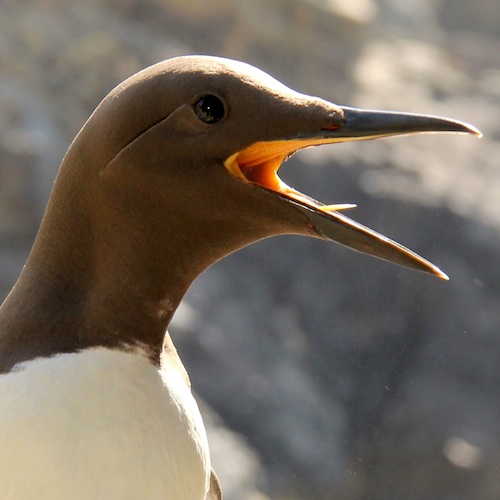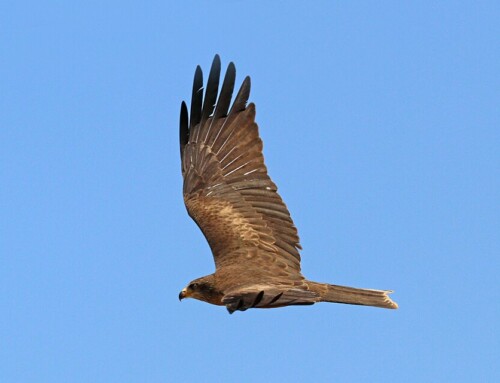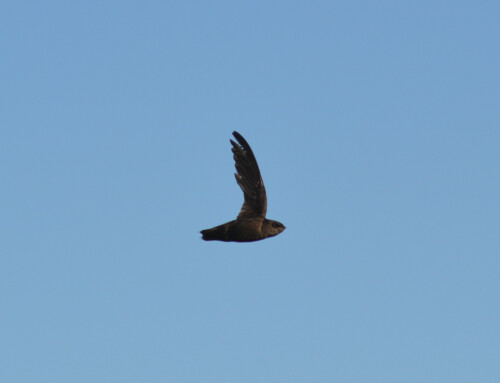Long-terms studies are disproportionately successful, but who should fund them?
Many birds, including most seabirds are long-lived. Understanding their population biology requires years of study. Each year of survival data is just a single data point and the environment is changing (especially at the present time). It requires great tenacity to collect enough data to establish a population’s true dynamics.
I have been studying the population biology of Common Guillemots Uria aalge on Skomer Island, Wales since the 1970s. The study started as a three-year PhD, but in such a short time it was impossible to do much other than work out what one should do in a long-term study. I was fortunate in that my position at Sheffield allowed me to return to Skomer each year thereafter and with the help of some excellent students, including my colleague Ben Hatchwell, set up what has become a long-term study. The first few years were spent developing and refining the techniques: counting methods; ways of measuring breeding success; ways of ringing large numbers of birds with minimum disturbance; methods of making durable colour rings . . . and so on.
In the 1970s during my PhD, numbers of guillemots on Skomer were at an all time low, just 2000 pairs (from around 100,000 pairs in the 1930s). Miraculously, in the 1980s numbers started to increase again, and it was this that provided the motivation to continue. With appropriate methodology now in place, I could start. The key to success was consistency: consistency of methodology – making sure that the results were comparable from year to year. When I was responsible for collecting data in the early years, consistency wasn’t a problem, but once the numbers of birds increased beyond a certain level, I needed a field assistant. The crucial thing then was to ensure that they used the same methods as I did. Careful training and supervision were essential, especially since, with the exception of Sherry Wilson who worked for seven consecutive years, I usually had a different assistant each year. Inevitably, some field assistants became more involved in the study than others, and I am extremely grateful to all of those who contributed to the study beyond the call of duty (you know who you are!).
The project has two main aims. First, to understand how the population works; second, to provide a scientifically robust monitoring system so that the fortunes of the guillemot population can be easily checked.
Understanding how the population works has involved collecting data on parameters such as adult and immature survival, breeding success, age of first breeding, immigration and emigration, that determine whether a population will increase, decease or remain roughly the same. This was the main research interest of my PhD supervisors David Lack, Chris Perrins and Euan Dunn. What I didn’t know when I started was how long it would take to collect meaningful estimates of these variables. Fortunately, the trajectory of the population between the early 1980s and the present time (2014) has remained similar – a 5% annual increase. This is despite, or possibly because of changing environmental conditions.
Climate change has meant earlier and earlier breeding – an advance of over two weeks between the 1970s and 2000s, although the last few years have seen both the earliest and latest breeding seasons in the whole study, which may be indicative of further change. The other environmental ‘change’ has been oil pollution. During the study there have been four major oil spills – some of them hundreds of miles away from Skomer – but all detectable in our population parameters.
It has literally taken forty years of work and some thirty years of data to accumulate sufficient and sufficiently good estimates of the population parameters to look at the guillemot balance sheet. We now know that guillemots do not start to breed, until they are seven years old on average (some take ten or more years); we know that usually about 95% of the breeding birds survive between one year and the next; and that around half of all chicks that leave the colony, survive to breed. Adding these together accounts for the 5% annual increase. It is worth noting that guillemots elsewhere, and especially in the north if the UK, are doing much worse.

Some organisations take their monitoring very seriously and check that it is being conduced properly. Others need to start doing that. Often, sloppy monitoring is conduced by well-meaning individuals that are poorly trained or unsupervised. Sometimes some scientific input is necessary to ensure that the monitoring is doing what it should.
In late 2013 the funding for my 40-year study of guillemots on Skomer was cut. For the previous 25 years I had been supported by the Countryside Council for Wales (CCW). They funded the project because they recognized that monitoring and research were valuable parts of running a National Nature Reserve like Skomer. When Natural Resources Wales (NRW) consumed CCW in late 2013 there were funding cuts, and CCW were forced to direct their limited remaining resources to those projects they were legally obliged to support. That didn’t include Skomer’s guillemots.
Within weeks of this decision however, persistent storms resulted in one of the worst seabird disasters in decades, with at least 40,000 dead birds, including many guillemots and many of our individually marked birds from Skomer. The storms are part of climate change – and there’s likely to be more. This event, sad though it was, was exactly what a long-term monitoring project is designed to help understand. Yet, when I wrote to NRW to make the case, they didn’t even reply to my email. I organized a conference, at which many of the UK’s top seabird biologists spoke passionately and convincingly about the need for long-term studies. One or more representatives of NRW attended, but they didn’t speak to the biologists, and went back to head office saying that nothing they’d heard made them change their minds about funding.
The natural world is falling apart around us: there are tens of millions of birds fewer in Europe today that there were in the 1970s. What magnitude of natural disaster – fast or slow – will it take to rouse a politician into action? I can’t help feeling that even though funding is tight, there is a moral responsibility to monitor our wildlife. Government bodies need to look at how money is spent and make transparent, well-informed decisions about which environmental issues they support.
Funding for the future
In the absence of official funding, I have resorted to crowd-sourcing and have set up a Just Giving campaign Tim’s long term study of guillemots.
If you can help, that will be wonderful. The support this project has received so far has been extraordinary. Governments might not care, but individuals do. Maybe this is the future.
All images © Tim Birkhead
Blog with #theBOUblog
If you want to write about your research in #theBOUblog, then please see here.








